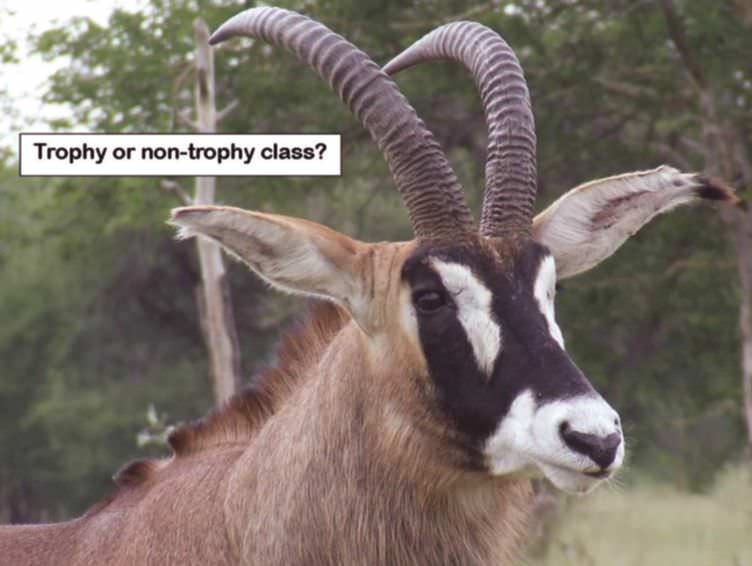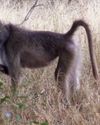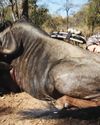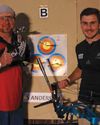Don’t shoot if you are not sure of the sex of the animal.

I know what it’s like. You have been looking forward to and preparing for your hunt for months on end. Finally you are out in the bush hunting. Your trigger finger is itching and there is the temptation to take the first shot that presents itself. The temptation may be more pronounced if the opportunities for a shot are few and far between and frustration levels begin to rise. However, there are, times when you should NOT take a shot and when self-control should be exercised over that finger itching to squeeze the trigger or to release the bowstring. Lack of self discipline at this point could be costly. Here are some situations where it would be wise to pass up the shot.
Don’t shoot if you are not sure of the sex of the animal. Some antelope are easy to identify as male or female because only the male has horns (e.g. impala, bushbuck, nyala and kudu). In other species both sexes have horns (e.g. gemsbok, sable, roan, eland, red hartebeest, tsessebe, springbok, blesbok etc.) and it can be a lot more difficult establishing whether the animal you are aiming at is male or female. If you have paid to shoot a male animal and then shoot a female (or vice versa) you may end up paying more than you bargained for or break the law by shooting an animal for which you do not have a permit. If you are not sure about the sex of the animal you are aiming at, DON’T take the shot!
This story is from the August 2016 edition of Africa's Bowhunter.
Start your 7-day Magzter GOLD free trial to access thousands of curated premium stories, and 8,500+ magazines and newspapers.
Already a subscriber ? Sign In
This story is from the August 2016 edition of Africa's Bowhunter.
Start your 7-day Magzter GOLD free trial to access thousands of curated premium stories, and 8,500+ magazines and newspapers.
Already a subscriber? Sign In

Bowhunting Chacma Baboon
The chacma baboon is one of Africa’s most intelligent and entertaining mammals. The name “chacma” is derived from the Khoi name for baboon – choachamma or choa kamma. They have a well-ordered and well-developed social order with a wide variety of social behaviours, including a dominance hierarchy, collective foraging, adoption of young by females and friendship pairings. They are widespread throughout South Africa.

My First Bowhunt
Sean is a commercial photographer,prolific Instagrammer and serial Facebooker. He is also a Staff Shooter for Bowtech SA, GoldTip, Beestinger,Sureloc& Team AZU and is the media liaison person for the South African National Archery Association (SANAA).

Hunting Out Of A Pop-Up Blind
I only got the chance to hunt out of a pop-up blind on one of my recent hunts and I was amazed at the results! We had had the Gorilla pop-up blind for a few years, but I never really got the opportunity to use it.

Hard Work Makes Dreams Come True!
Here we are, five years down the line. I can honestly say it has been and still is an awesome, scary and exhilarating journey!

When Not To Shoot
Don’t shoot if you are not sure of the sex of the animal.